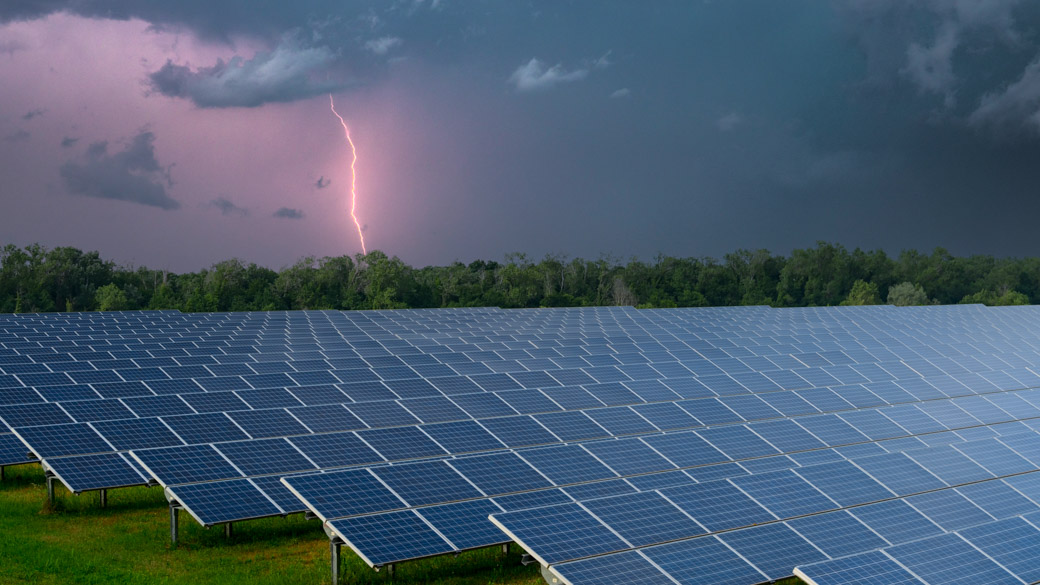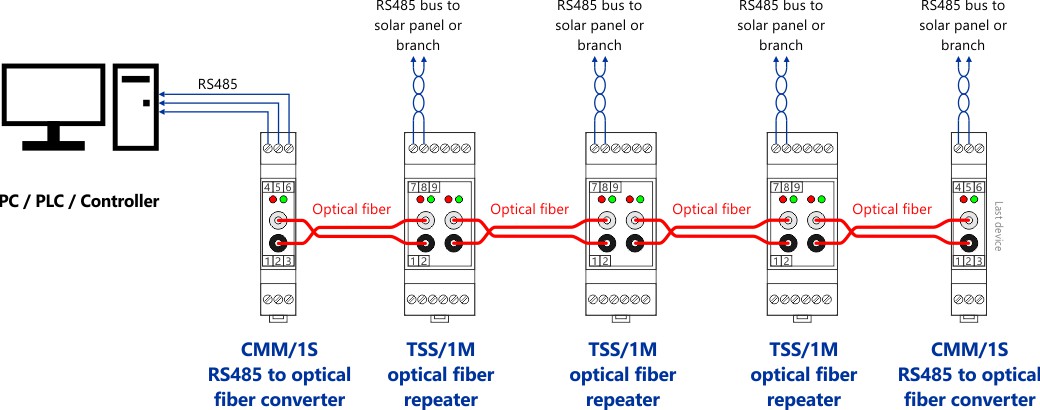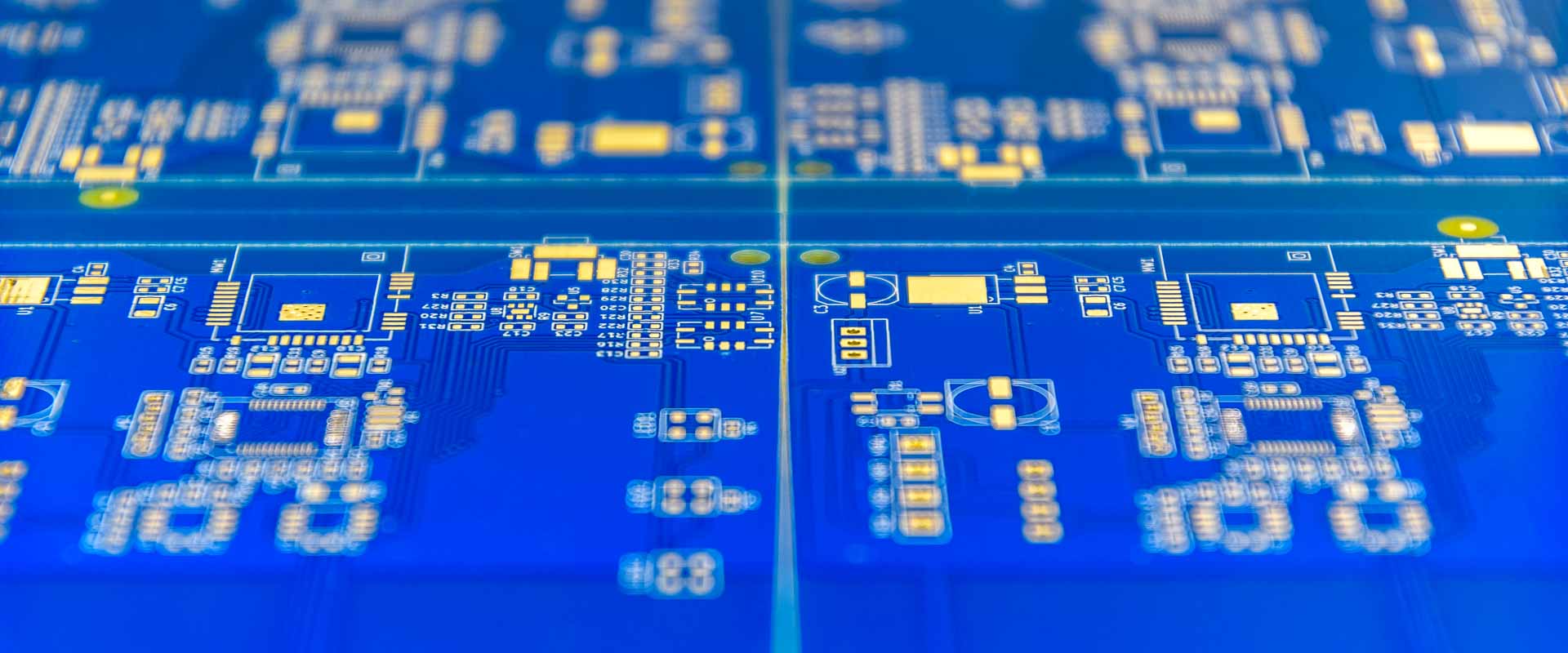17 May Lightning protection in solar power plants

Photovoltaic plants are increasingly common in our environment, since they provide cheap and clean energy harvested from the sun. The initial cost is usually high, though, as panels are quite expensive, and there is a strong need to protect them against adverse events, like lightnings and voltage surges. Reliability and consistency are among the most important parameters when delivering energy to people and companies. For this reason, downtime must be minimized, even in case of extreme weather conditions.
Lightnings
Lightnings are extremely powerful and can spread across the whole solar farm in a fraction of a second, damaging the equipment irreversibly. This can happen not only through power supply cables, but also through serial communication buses, such as RS485 or RS232 copper wires. Serial communication is almost always needed in a photovoltaic system to remotely monitor health status and efficiency parameters of panels and solar trackers, using PPCs (Power Plant Controllers). That’s why also communication networks in solar power plants need lightning protection.
The safest way to isolate every branch from the others, thus minimizing risk, is to decouple every branch. In this way, should a lightning strike a solar panel or other devices attached to it, only that group would be damaged, as current would not flow through other branches. Fuses and circuit breakers might seem a good idea, as they are cheap and they partially defend against voltage surges. However, they offer absolutely no protection against the huge currents of a lightning. Protection against lightning might be seen as a big up-front cost for solar power plants, but it is actually an insurance to save money in the long run. Serial to optical fiber converters and repeaters are an excellent way to achieve this result, by optically decoupling different branches.
Solutions
Synthetic or glass optical fibers are remarkable electrical insulators, and they have great communication range. These features make optical fiber the ideal candidate as communication medium in a solar power plant. In extensive photovoltaic power systems, with hundreds or thousands of panels, optical fiber is almost a must-have. However, it is good practice to optically isolate branches also in small photovoltaic systems. Even residential or domestic panels are susceptible to lightnings and voltage surges, so it might be a good idea to optically isolate them in order to avoid damages to home appliances and electrical systems in general.
The suggested configuration is to use optical repeaters with RS485 output, such as TSS/1M or TVV/1M, in order to cover and protect the whole solar farm, and guarantee signal integrity. These industrial repeaters are suitable for DIN rail mounting and accept a wide range of AC and DC supply voltages. DIN rail is an industrial standard often used in electrical panel and equipment racks, to mount control equipment like optical converters and power supplies. RS485 is a reliable serial standard, widely adopted in industrial environments, can cover very long distances and has a fairly good immunity to low and medium electromagnetic interferences, depending on the bus configuration. Other combinations of optical fiber and serial standards are available, such as RS232, RS422, and Ethernet, but you can also inquire about custom converters and repeaters if you have special requests.
Communication
Power plant controllers are fairly common, as they offer numerous power regulation options, health status and grid stability monitoring, production levels, and so on. Controllers can be PLC-based (Programmable Logic Controller), which means they are pre-programmed and work by means of a feedback loop. PLCs are used mostly in industrial environments for process control and automation, as they’re reliable and rugged. They allow system management and control, which is almost mandatory in bigger solar plants. Controllers communicate for example in Modbus via the most common serial standards, such as RS422, RS232, and RS485 above all. They can be connected using copper electrical wires, but there are usually better solutions.
Optically decoupling different branches is useful not only for protection against adverse events, but also from a communication standpoint. Electromagnetic interferences (EMI) may disturb the signals when using copper wires, while optical fibers are immune from electromagnetic noise, since they communicate via optical signals. Using optical fibers is suggested especially in heavily disturbed environments, and power farms of any kind are among the most affected by this problem. This is why optical fiber is a great solution for communication in a solar power plant, it solves multiple issues at once. An example connection scheme is depicted in the following figure, feel free of course to contact us if you need more information:

Connection scheme for daisy chain optical communication, using an optical fiber backbone and a RS485 bus for PLC connection
Configuration
To guarantee maximum lightning protection in solar power plants, every control unit should have its own electrical branch. Optical fiber has many advantages over copper, but it can be more expensive, depending on the scenario. To reduce initial costs you can deploy fewer optical repeaters and connect more controllers to the same electrical RS485 bus, thus reducing the overall number of optical branches. However, by doing so, those control units (and connected panels) are vulnerable to a lightning even if it strikes just one panel among the group.
Optical fiber implementation should vary accordingly to the arrangement of the solar panels, so as to optimize resources and efforts. For example, glass fiber has a greater communication range than synthetic fiber, but it is also more expensive. The number of the repeaters and the most suitable fiber technology depend also on the overall size of the solar plant. You can reach out to us for technical consulting and advice on network topology and configuration, to help you evaluate costs and benefits.



